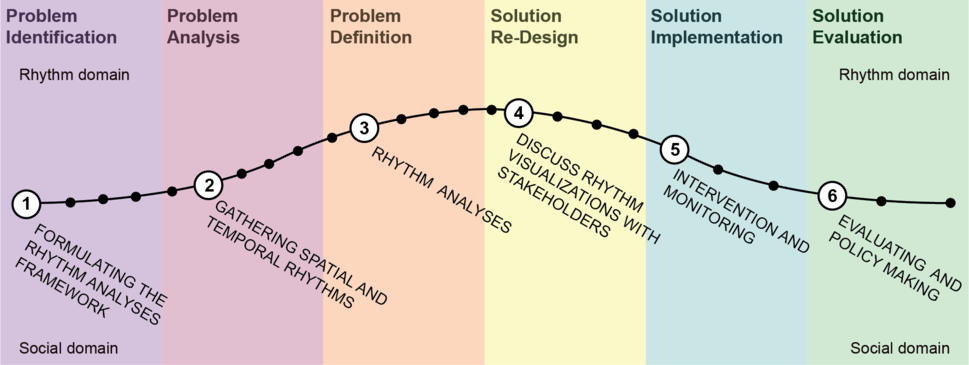The book where the article is published can be purchased through the link: https://edinburghuniversitypress.com/book-rhythm-and-critique.html
City Rhythm: An Approach to Urban Rhythm Analysis
Article published in "Rhythm and Critique" (2020), Edited by Paola Crespi and Sunil Manghani, in Edinburgh University Press
This chapter explores rhythm as a dynamic in the social and cultural domain. By executing different case studies in which qualitative methodologies from architecture and the social sciences are used, a methodology for rhythm analysis is constructed. In the case studies, it is found that the rhythm analysis functions as boundary object in conversations with stakeholders for identifying new solutions spaces for specific social issues. The case studies also identify three rhythm dynamics that are significant to the social domain: tuning, matching and balancing rhythm.
Results of the case studies are then contextualised by different rhythm theories that are relevant for the urban context: as variation in a pattern, as territory, as force for engagement and factor for trade-offs for trust. Rhythm has long been a topic of interest, though arguably this becomes more explicit over the twentieth century, with rhythm being referenced and studied in Europe in a variety of fields (Crespi 2014). This chapter draws insights from the writings of contemporary academics working on rhythm in order to explore the possibility of bringing rhythm analysis into practice in today's urban contexts. It is found that in the literature there is a gap in formulating a methodology for rhythm analysis that can be validated and falsified. As a result, based on case studies and rhythm theory, a methodology for urban rhythm analysis is formulated.
